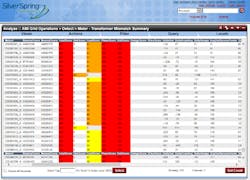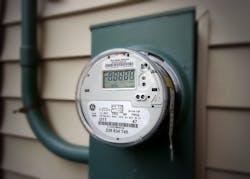ComEd Corrects Meter-Transformer Mismatches
The reliability of an electrical network model is similar to the strength of a chain: Both vary as a function of their weakest links. Beyond their enabling a utility to rapidly respond to the exact location of an outage, there are numerous additional benefits associated with accurately mapping meter-to-transformer linkages. By accurately detailing the number of meters per transformer, a foundation for optimal circuit planning and distribution load factor management is created, and transformers can be sized optimally based on high-accuracy “actuals” rather than more general “rules of thumb.”
When ComEd began its rollout of Advanced Metering Infrastructure in 2012, a longstanding data issue of mismatched meters and transformers came to the forefront. One of the causal factors of these discrepancies was that customer data, housed within CIMS (Customer Information and Management System) was not linked directly to ComEd’s Geographic Information System (CEGIS), the system of record for transformers. Therefore, CIMS data errors accumulated over the years. CIMS' reliance on manual user input likely compounded the issue.
ComEd’s Outage Management System (OMS) has been utilized to make meter-transformer mismatch corrections in the past based on reported outages, however the applicability has been limited due to its manual nature. Another important point is that ComEd’s electrical connectivity model within the GIS only extends to the secondary main, and not to the meter level. In that regard, the meter data join is logical, not topological.
An initial estimate revealed that 193,000 meters - representing nearly 5% of ComEd's customer base – may have been pointing to an incorrect or non-existent transformer in CIMS. In 2014, ComEd partnered with Silver Spring Networks (then Detectent) to perform data analytics to determine the scope of the issue, and work toward finding a novel, cutting-edge solution.
The Change Meter Order (CMO) process of replacing an analog meter with a new digital meter has been diligently monitored to ensure seamless billing to the proper customer account. This process was designed to ensure that the meter technician captures a GPS location at the point of each installation, which is a critical component to the quality of spatial analysis. With a combination of address geocoding and this GPS data, it was possible to pinpoint the transformer nearest to each meter. Although proximity is not necessarily an absolute indicator of association, pairing all meters to an existing transformer within design spec distance was a necessary first step in data cleanup. During the initial data analysis, it was determined that distance logic (any meter more than 1000' from its assigned transformer) and ‘orphans’ (meters referring to invalid transformer numbers), resulted in 30,000 customer service points that could be re-assigned to a more realistic transformer.
The next step was the introduction of a variety of algorithms to increase precision of meter- transformer pairing. A scoring system was implemented to enhance the distance methodology, taking into account whether the transformer is on the same side of the street as the meter, transformer voltage compatibility, and the association of meters at neighboring addresses. Field validations were utilized to measure the success of these modifications, ultimately allowing the distance threshold to be significantly reduced. A high percentage of correct matches were thus selected even among those with a small (<100’) distance discrepancy.
A second methodology introduced in late 2015 utilizes mismatched outage data as an indicator; for instance, if an outage is recorded as having occurred on a transformer during a particular window of time, yet an associated meter did not experience an outage (based on its interval voltage data), then it can be inferred that the two are mismatched. Conversely, if certain meters associated to a transformer experienced an outage, yet the transformer did not, that’s another likely indication of a bad link. Another methodology in development involves comparing voltage profile deviation between meter and transformer. Under normal circumstances, the voltage profile of a paired meter and transformer – consisting of the small variations in voltage that occur over the course of days and weeks - will tend to mirror. In the case of a mismatch, there will be a visible discrepancy in the graphical plot of the profiles.
During the first year of this initiative, over 130,000 meter-transformer associations have been corrected utilizing the above methodologies. With ComEd halfway through an AMI deployment of a 4 year plan to deploy over 4 million meters, the data correction project will realize significant results for the next two years. In its partnership with Silver Spring Networks, ComEd continues to seek out methods to improve data quality.




